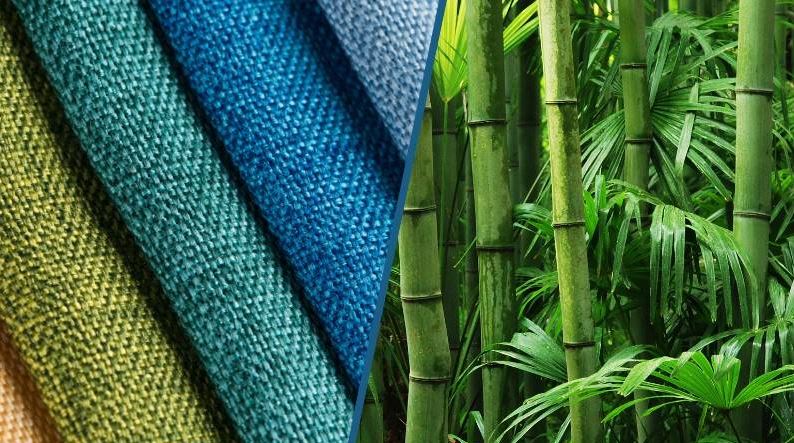Dive into the innovative world of textile design with our exploration of sublimating on bamboo fabric. This eco-friendly material, celebrated for its sustainability and natural durability, presents a unique canvas for vibrant designs. However, the dense texture and natural characteristics of bamboo pose intriguing challenges for the sublimation process. In this blog post, we’ll unravel the possibilities of marrying advanced sublimation techniques with the eco-conscious allure of bamboo. From adjusting temperature and pressure settings to experimenting with special coatings, discover how to navigate these challenges effectively. Join us as we embark on a journey to blend creativity with sustainability, unlocking new horizons in the realm of eco-friendly fashion.
Can you sublimate on Bamboo fabric?
Yes, you can sublimate on bamboo fabric, but it requires some special considerations due to its natural and dense properties. Unlike synthetic fibers like polyester, bamboo doesn’t inherently bind with sublimation ink. To achieve successful sublimation on bamboo, you may need to apply a special coating to the fabric to make it more receptive to the ink. Additionally, finding the right combination of temperature, pressure, and time is crucial, as bamboo fabric can be sensitive to high heat. Experimentation and adjustments in the sublimation process are often necessary to ensure vibrant, durable prints. While challenging, sublimating on bamboo offers a sustainable alternative for creating personalized and eco-friendly textile designs.
The Nature of Bamboo Fabric
Bamboo fabric is quite special. It comes from the bamboo plant, which is known for its fast growth and sustainability. This makes bamboo a nature-friendly choice for making clothes and other items. People love bamboo fabric because it is natural, soft, and very durable. It’s like the fabric gets its strength and beauty directly from the bamboo plant itself.
One of the most impressive things about bamboo fabric is its texture. It feels smooth and comfortable against the skin, making it a popular choice for clothing. But there’s more to bamboo than just being comfortable. It’s also known for being eco-friendly. This means it’s good for our planet, as bamboo plants don’t need much water or chemicals to grow. This makes bamboo a star in the world of sustainable materials.
Bamboo fabric also has a unique grain, or pattern, that comes from the natural way the bamboo fibers are woven together. This gives each piece of bamboo fabric its own special look, much like a fingerprint.
However, when we talk about using bamboo fabric for sublimation, we have to think about how this natural and dense material will work with the inks and heat required for transferring designs. Bamboo’s natural characteristics might mean we need to explore different approaches to make sure the designs show up clearly and last a long time.
In short, bamboo fabric is not just eco-friendly and comfortable, but it also brings a touch of nature into our clothes. As we explore how to sublimate on this beautiful material, we’re reminded of the importance of finding ways to keep our planet healthy while enjoying the things we love.
Challenges and Possibilities of Sublimating on Bamboo
Sublimating on bamboo fabric brings its own set of challenges and possibilities. Since bamboo is a natural and dense material, it doesn’t absorb sublimation ink the same way more common substrates do. This is where we face our first challenge: getting the bright and vibrant designs to transfer and stay on the bamboo fabric.
One of the main challenges is the texture and surface of bamboo fabric. It’s different from materials like polyester, which are often used for sublimation. Polyester has a certain kind of surface that holds onto the ink well, but bamboo’s natural surface might not do this as easily. This means we might need to think about special coatings or treatments to help the fabric hold the ink better.
However, with innovative thinking and experimentation, we can explore new possibilities. For instance, finding the right temperature and pressure settings for sublimation on bamboo could make a big difference. Adjusting these settings could help the ink transfer more effectively, making the designs as durable and impressive as they should be.
Another possibility is exploring different types of inks or techniques that work better with bamboo’s unique characteristics. This could open up new ways to create beautiful and sustainable fashion pieces, combining the eco-friendly benefits of bamboo with the creative potential of sublimation printing.
while sublimating on bamboo presents certain challenges, it also opens up a world of exciting possibilities. By exploring and experimenting with new methods, we can find innovative ways to bring our designs to life on this sustainable fabric, making fashion both beautiful and kind to our planet.
Read: Can You Sublimate on Nylon Fabric?
Steps for DIY Bamboo Fabric Sublimation

Gather Your Materials
- Sublimation printer and ink: Ensure you have a printer capable of sublimation printing with quality sublimation ink.
- Bamboo fabric item: Choose a bamboo fabric item you wish to sublimate on. This could be a T-shirt, scarf, or any other suitable piece.
- Sublimation paper: This special paper is where you’ll print your design before transferring it to the fabric.
- Heat press: A crucial tool for applying the necessary temperature and pressure for sublimation.
Prepare Your Design
- Create or select a design you want to transfer onto the bamboo fabric. Use graphic design software for precision and clarity in your design.
- Mirror the image: Remember to flip your design horizontally, as it needs to be mirrored to transfer correctly.
Print Your Design
- Load the sublimation paper into your printer.
- Using the sublimation printer, print your mirrored design onto the sublimation paper with the sublimation ink.
Prepare the Bamboo Fabric
- Clean the fabric to ensure there are no contaminants that could affect ink absorption.
- Pre-heat the fabric with your heat press to remove any moisture, ensuring a clean and flat surface for better transfer.
Position the Design
- Place the printed sublimation paper face down on the area of the bamboo fabric where you want the design.
- Use heat-resistant tape to secure the paper in place if necessary, preventing any movement during the transfer process.
Sublimate the Design
- Set the heat press to the recommended temperature and pressure for bamboo fabric. This might require some experimentation to find the optimal settings, as bamboo can be more sensitive than other fabrics.
- Press the design onto the fabric for the recommended amount of time. The duration will depend on your heat press and fabric thickness but is typically around 60 seconds.
Cool Down and Peel
- After pressing, allow the fabric to cool down before carefully peeling away the sublimation paper.
- You should see your design transferred beautifully onto the bamboo fabric.
Final Touches
- Inspect the design to ensure it has transferred evenly and with vibrant colors.
- Some may prefer to press the fabric once more with a protective paper on top to ensure the design’s durability.
Read: Can You Sublimate on Acrylic Beanies?
Technical Considerations for Sublimating on Bamboo
When we decide to sublimate on bamboo fabric, there are some important technical considerations to keep in mind. These considerations help ensure that the designs we transfer onto the fabric look good and last a long time.
First, let’s talk about temperature. Sublimation printing requires heat to transfer designs from paper to fabric. However, because bamboo is a natural and somewhat dense material, we might need to adjust the heat settings. If the temperature is too high, it could damage the fabric, but if it’s too low, the design might not transfer properly. Finding the right balance is key.
Pressure is another important factor. The pressure applied during the sublimation process helps the ink penetrate the fabric. For bamboo, the right amount of pressure ensures that the design adheres well to the fabric’s surface without harming its natural texture.
We also need to consider the fabric’s characteristics, such as its durability and grain. Bamboo fabric has a unique structure that might affect how the ink sets. Understanding these characteristics can help us make the necessary adjustments to the sublimation process.
Sometimes, bamboo fabric might need a special coating to better accept the sublimation ink. This coating acts like a bridge, helping the ink bond with the fabric. However, it’s important to use coatings that don’t compromise the eco-friendly and natural qualities of bamboo.
Lastly, experimentation is essential. Trying different settings and methods can help us discover the best way to sublimate on bamboo. This might include adjusting the heat, pressure, and even the type of ink used. Each piece of bamboo fabric can react differently, so being open to experimentation can lead to innovative and effective results.
In essence, sublimating on bamboo requires a thoughtful approach. By considering the temperature, pressure, and fabric characteristics, and being open to experimentation, we can achieve beautiful results that highlight both the beauty of the designs and the sustainability of bamboo fabric.
Conclusion
Sublimating on bamboo fabric can be a rewarding DIY project, blending creativity with sustainability. Remember, working with bamboo might present unique challenges due to its natural and dense characteristics. However, with patience and experimentation, you can achieve impressive and eco-friendly results. Enjoy the process of bringing your designs to life on this sustainable fabric!

